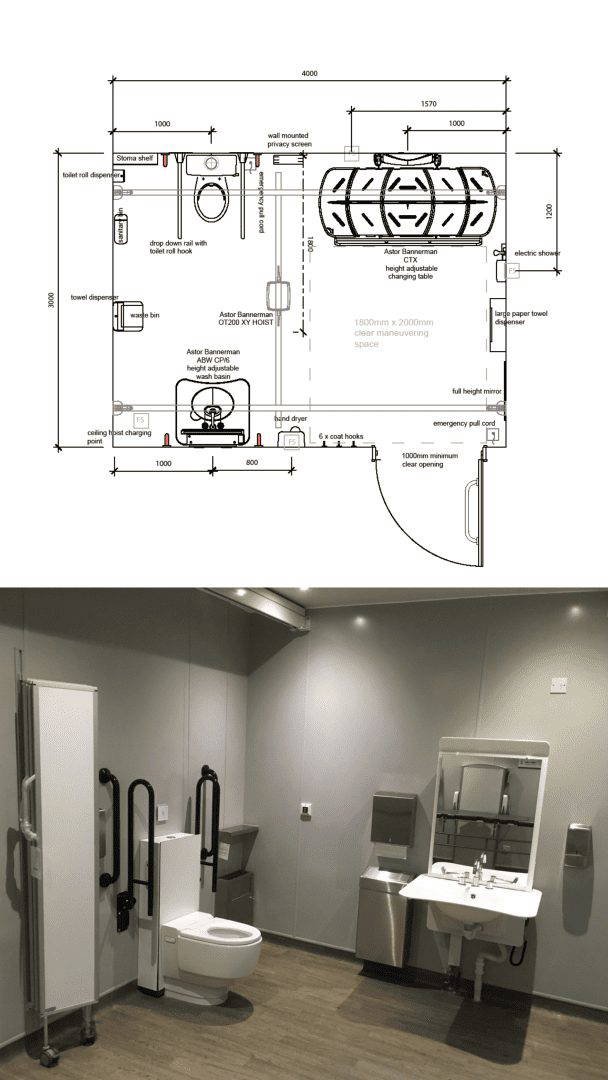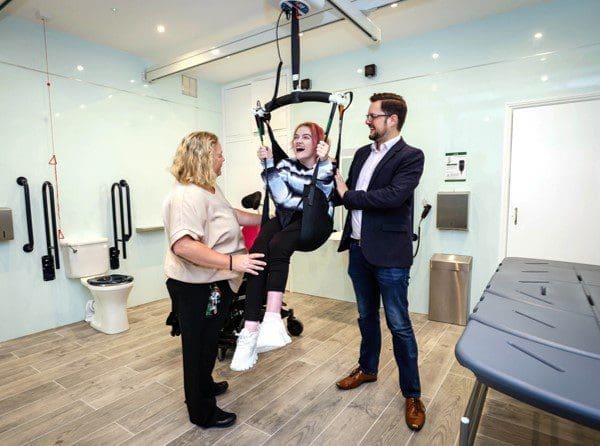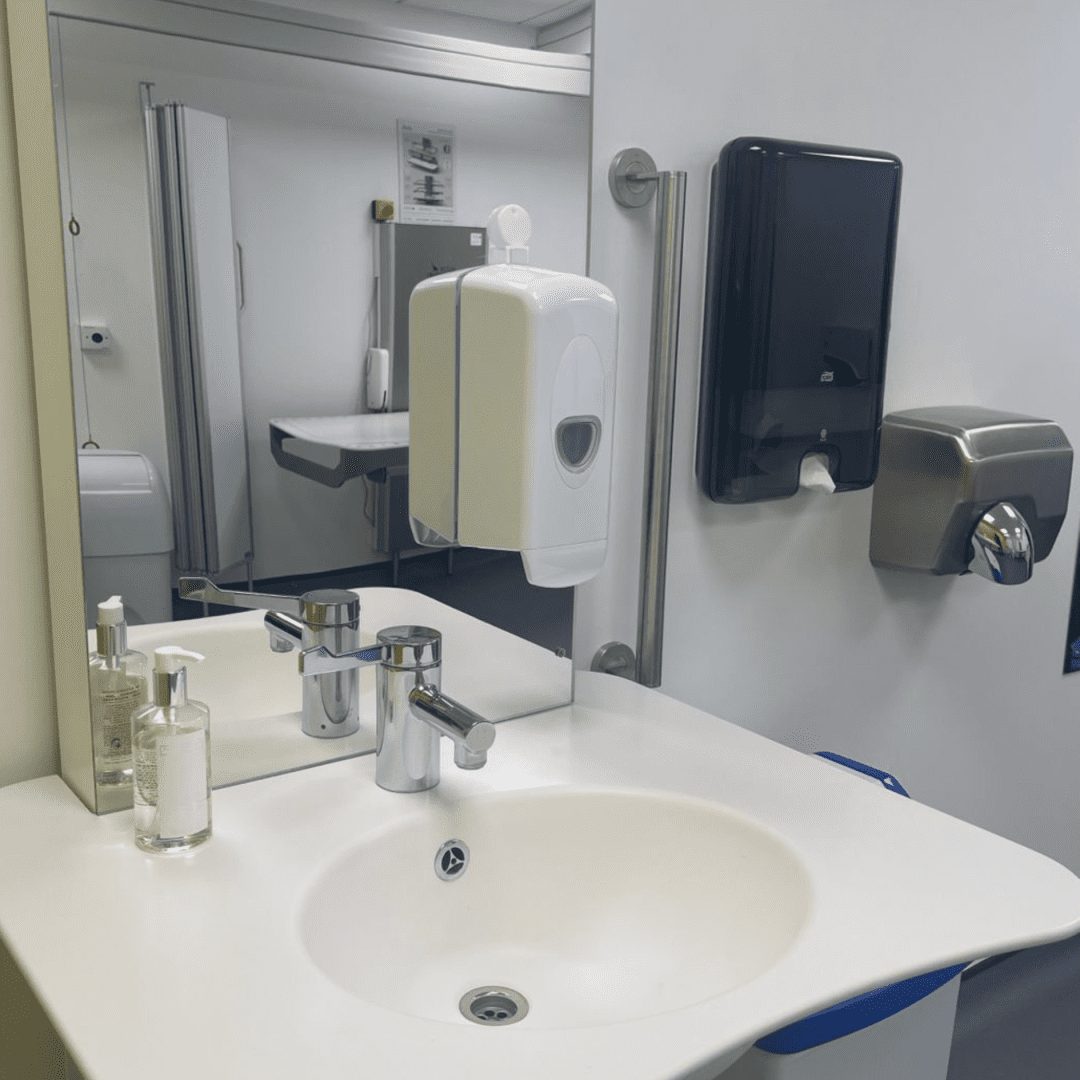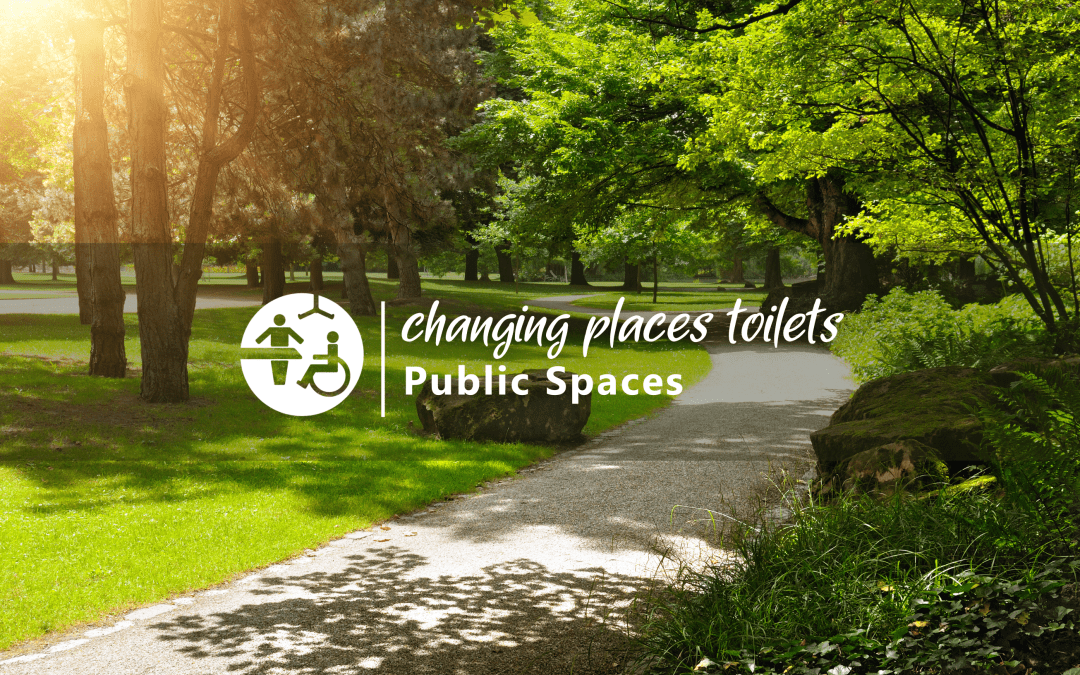More than 240,000 disabled people and their families rely on Changing Places Toilets when out and about in public spaces, which is why the Government introduced legislation in January 2021, stipulating that large new public building developments and redevelopments should include at least one Changing Places Toilet.
However, this doesn’t necessarily apply to outdoor public spaces such as parks, green spaces and town centres, which are often served by public toilets within spaces such as car parks or in small standalone buildings. It is incredibly important for local disabled residents that these spaces are accessible, and that is why the recent Government funding to Local Authorities has been crucial – giving specific funding to Councils to enable them to update toilets within their public spaces.
Key Considerations
1. LEGISLATIVE CONSIDERATIONS
Under the Government’s new Changing Places rules, which came into force in January 2021, places of assembly, recreation and entertainment may have to install a Changing Places toilet if it is a new build or undergoing a major refurbishment. This will apply to single buildings with a capacity for 350 or more people; or a collection of smaller buildings with a capacity of 2000 people or more.


2. LOCATION
It is important that your Changing Places toilet is easy to access by all. Make sure that there are level, wide paths giving access to the toilet. If there are existing public toilets, it is advisable to put the Changing Places Toilet in the same location, as long as that area is accessible.
Consider the overall accessibility of the space. For example, is there sufficient suitable car parking or travel infrastructure? Are any pavements and changes in ground height easy to navigate?
Information on Changing Places Toilet facilities should be available online and at all appropriate on-site information areas, plus on all maps.
3. LAYOUT
There are detailed requirements for Changing Places Toilets that must be followed to ensure that the toilet can be officially registered as a Changing Places Toilet.
Our Changing Places Toilet Project Managers are experienced in the planning and design of these fully accessible toilets, can give advice at every stage, and are aware of common pitfalls.
We can assist in the planning and design stages by offering:
-
-
- Full turnkey solution if required
- One-to-one project support and advice
- Specifications, BIM and CAD files
- Site-specific detailed drawings
- Knowledge of the latest building regulations and recognised standards
- Design troubleshooting
- CPD training for Architects and Contractors
-



4. EQUIPMENT
Choosing the right products for a Changing places Toilet in retail is a crucial part of the planning and design process, and various factors need to be considered when making the decision. With public spaces, robustness and ease of cleaning and maintenance are particularly important.
Astor Bannerman have been designing and manufacturing equipment for disabled people and their families for 30 years, and we have been involved with Changing Places Toilets for over 10 years. With this wealth of experience, we are uniquely placed in the UK to advise on the appropriate equipment for Changing Places Toilet retail projects.
Astor Bannerman’s Changing Places Equipment services:
• Full range of Changing Places Toilet equipment
• Improved lead times & flexibility due to being a UK manufacturer
• Equipment designed specifically for public Changing Places Toilets
• Experienced installers and full project management oversight
Want more information about how we can help with your Changing Places Toilet project?
ABOUT ASTOR BANNERMAN
Astor Bannerman are a UK manufacturer offering the full range of products specified by Changing Places regulations, including fixed and mobile changing tables, hoists, height adjustable washbasins, toilets and accessories. They have over 27 years’ experience of designing and installing equipment for disabled people and their families.

